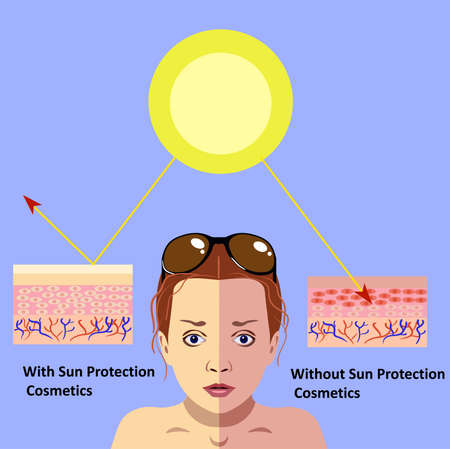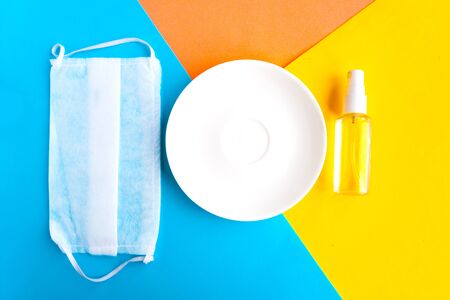Introduction to Chemical Peels
Chemical peels are a popular skincare treatment designed to improve the appearance and texture of the skin. They work by applying a chemical solution to the skin, which exfoliates the outer layers and stimulates cell turnover. As a result, chemical peels can help address various skin concerns, including acne, hyperpigmentation, fine lines, and uneven skin tone.
How Do Chemical Peels Work?
Chemical peels use different types of acids to remove dead skin cells and promote new cell growth. Depending on the strength of the peel, it can target different layers of the skin. The process typically involves:
- Application of a chemical solution to exfoliate the skin.
- Controlled peeling or shedding of damaged skin layers.
- Regeneration of new, healthier skin cells.
Why Are Chemical Peels Popular?
Chemical peels have gained popularity because they provide noticeable results with minimal downtime (depending on the type of peel). People choose chemical peels for various reasons, including:
- Reducing acne and acne scars.
- Minimizing fine lines and wrinkles.
- Improving skin texture and tone.
- Fading hyperpigmentation and sun damage.
- Boosting collagen production for youthful-looking skin.
Types of Chemical Peels
Chemical peels come in different strengths and formulations. Here’s an overview of the three main types:
| Type | Description | Best For | Downtime |
|---|---|---|---|
| Superficial Peel | A mild peel that removes only the outermost layer of skin. | Mild discoloration, rough texture, early signs of aging. | Little to no downtime. |
| Medium Peel | Penetrates deeper into the skin to target more significant issues. | Fine lines, acne scars, moderate discoloration. | A few days to a week. |
| Deep Peel | A strong peel that reaches deep into the skin for dramatic results. | Deep wrinkles, severe sun damage, significant discoloration. | Several weeks of recovery time. |
Is a Chemical Peel Right for You?
If youre looking to improve your skins appearance, a chemical peel might be a great option. However, its important to consult with a skincare professional to determine which type of peel is best suited for your skin type and concerns. Factors like skin sensitivity, lifestyle, and desired results will play a role in choosing the right peel for you.
Key Takeaways:
- Chemical peels exfoliate the skin and promote regeneration for a smoother complexion.
- They are used to treat acne scars, fine lines, uneven tone, and more.
- The three main types—superficial, medium, and deep—offer different levels of intensity and results.
- A consultation with a professional is recommended before undergoing any chemical peel treatment.
Understanding how chemical peels work is essential before deciding on this treatment. In the next section, we’ll dive deeper into each type of chemical peel and its unique benefits!
2. Superficial Peels: Gentle Exfoliation
Superficial peels, also known as light chemical peels, are a great option for those looking for mild exfoliation and skin rejuvenation without significant downtime. These peels work on the outermost layer of the skin (epidermis), helping to improve texture, tone, and overall radiance.
Benefits of Superficial Peels
Light chemical peels offer multiple benefits, making them ideal for individuals with minor skin concerns. Some key advantages include:
- Gentle exfoliation: Removes dead skin cells to reveal a fresher complexion.
- Improves skin texture: Helps smooth rough or uneven skin.
- Evens out skin tone: Reduces mild pigmentation and sun damage.
- Boosts hydration: Certain acids, like lactic acid, help retain moisture in the skin.
- No major downtime: Skin may appear slightly red but typically recovers quickly.
Common Ingredients in Superficial Peels
The effectiveness of superficial peels depends on the active ingredients used. Here are some commonly used acids in light chemical peels:
| Ingredient | Benefits |
|---|---|
| Glycolic Acid | A type of alpha hydroxy acid (AHA) that promotes cell turnover, brightens skin, and reduces fine lines. |
| Lactic Acid | A gentle AHA derived from milk that hydrates the skin while providing mild exfoliation. |
| Mandelic Acid | A slow-penetrating AHA that helps with acne, hyperpigmentation, and sensitive skin. |
| Salicylic Acid | A beta hydroxy acid (BHA) that deeply cleanses pores and is excellent for oily or acne-prone skin. |
Who Should Consider a Superficial Peel?
If you’re new to chemical peels or have sensitive skin, a superficial peel is a great place to start. These treatments are suitable for individuals dealing with dullness, dryness, mild acne scars, or slight discoloration. Because they are gentle, they can be done more frequently compared to deeper peels.

3. Medium Peels: Addressing Moderate Skin Issues
Medium chemical peels penetrate deeper into the skin compared to superficial peels, making them an excellent choice for individuals dealing with moderate wrinkles, sun damage, and pigmentation issues. These peels work by removing damaged skin layers, promoting collagen production, and revealing a smoother, more even complexion.
How Medium Peels Work
Medium-depth peels use stronger acids to reach the middle layers of the skin. One of the most common ingredients in medium peels is trichloroacetic acid (TCA), which effectively treats fine lines, acne scars, and uneven skin tone. Unlike superficial peels, medium peels may require some downtime as the skin undergoes a peeling process over several days.
Benefits of Medium Peels
Medium chemical peels offer a range of benefits for those looking to improve their skin’s texture and tone. Some key advantages include:
- Reduction of Fine Lines and Wrinkles: Helps smooth out moderate signs of aging.
- Improvement in Skin Texture: Enhances overall smoothness and radiance.
- Treatment for Hyperpigmentation: Fades dark spots, melasma, and sun damage.
- Acne Scar Reduction: Helps minimize the appearance of acne scars over time.
- Boosted Collagen Production: Encourages firmer and more youthful-looking skin.
Common Acids Used in Medium Peels
| Acid Type | Main Benefits |
|---|---|
| TCA (Trichloroacetic Acid) | Evens out pigmentation, reduces wrinkles, and improves skin texture. |
| Jessners Peel (Lactic Acid + Salicylic Acid + Resorcinol) | Treats acne scars, sun damage, and hyperpigmentation. |
What to Expect After a Medium Peel
The recovery time for a medium peel typically ranges from 5 to 7 days. During this period, the skin will appear red and begin to peel. It is crucial to follow post-peel care instructions, such as moisturizing frequently and wearing sunscreen to protect sensitive new skin. Some mild discomfort or tightness may also be experienced as the skin heals.
4. Deep Peels: Dramatic Skin Transformation
Deep chemical peels are the most intensive type of peel available, designed to address severe skin damage such as deep wrinkles, scars, and significant hyperpigmentation. These treatments penetrate multiple layers of skin, providing dramatic results but also requiring a longer recovery period.
What Are Deep Chemical Peels?
Deep peels use strong acids like phenol or high-concentration trichloroacetic acid (TCA) to deeply exfoliate the skin. Unlike lighter peels, which only affect the surface, deep peels remove damaged skin layers, stimulating collagen production and revealing fresh, new skin underneath.
Benefits of Deep Peels
Deep chemical peels offer significant improvements for those dealing with advanced signs of aging or extensive skin damage. Here are some of the major benefits:
| Benefit | Description |
|---|---|
| Reduction of Deep Wrinkles | Smooths out pronounced lines and wrinkles, particularly around the mouth and forehead. |
| Correction of Severe Sun Damage | Removes heavily pigmented areas caused by prolonged sun exposure. |
| Treatment for Scarring | Helps improve the appearance of deep acne scars and other facial scars. |
| Long-Lasting Results | The effects can last for years, making it a worthwhile option for those seeking dramatic changes. |
Recovery Process and Considerations
Since deep peels involve extensive exfoliation, the recovery process is longer compared to other chemical peels. Patients should expect:
- Initial Healing Period: Redness, swelling, and peeling can last for two to three weeks.
- Post-Treatment Care: Avoiding sun exposure is crucial as the new skin is highly sensitive.
- Pain Management: Some discomfort is expected, and doctors may prescribe pain relievers to ease symptoms.
- Best for Fairer Skin Tones: Deep peels may not be suitable for darker skin tones due to a higher risk of pigmentation issues.
Who Should Consider a Deep Peel?
This treatment is ideal for individuals who have tried other skincare treatments without success and are looking for a long-term solution for serious skin concerns. However, due to its intensity, it’s important to consult with a qualified dermatologist or cosmetic professional before undergoing the procedure.
Is a Deep Peel Right for You?
If youre considering a deep peel, weigh the benefits against the extended downtime and potential risks. A professional consultation will help determine if this treatment aligns with your skin type and goals.
5. Choosing the Right Peel for Your Skin Type
Selecting the best chemical peel depends on your skin type, concerns, and desired results. Not all peels work the same way for everyone, so understanding which one suits your needs is essential.
Understanding Your Skin Type
Before choosing a chemical peel, its important to identify your skin type. Heres a simple guide:
| Skin Type | Characteristics |
|---|---|
| Oily Skin | Prone to acne, enlarged pores, and excess sebum production. |
| Dry Skin | Flaky, tight-feeling, and often sensitive. |
| Combination Skin | Oily in some areas (like the T-zone) but dry in others. |
| Sensitive Skin | Easily irritated, prone to redness and discomfort. |
| Normal Skin | Balanced moisture and oil levels with minimal concerns. |
Selecting the Best Chemical Peel for Your Needs
Different types of chemical peels target specific skin concerns. Below is a quick guide to help you decide:
| Pee lType | Best For | Expected Results | Downtime |
|---|---|---|---|
| Superficial Peels (Glycolic or Lactic Acid) | Dull skin, mild discoloration, fine lines. | Smoother, brighter skin with minimal peeling. | No downtime; slight redness possible. |
| Medium Peels (TCA Peel) | Acne scars, wrinkles, uneven tone. | More even complexion with noticeable peeling. | A few days of redness and peeling. |
| Deep Peels (Phenol Peel) | Severe sun damage, deep wrinkles. | Dramatic improvement in texture and tone. | Several weeks of recovery time required. |
Professional Advice for Choosing a Peel
If You Have Sensitive Skin…
Avoid strong acids like TCA or phenol. Instead, opt for lactic acid or enzyme-based peels that are gentle on the skin.
If You Struggle with Acne…
BHA peels (such as salicylic acid) are great for oily and acne-prone skin because they penetrate deep into the pores and help reduce breakouts.
If Youre Concerned About Aging…
TCA or glycolic acid peels can help reduce fine lines and promote collagen production for firmer skin.
If You Want Minimal Downtime…
A light peel with alpha hydroxy acids (AHAs) can refresh your skin without significant peeling or recovery time.
If youre unsure which peel is right for you, consult a skincare professional who can assess your skin type and recommend the best treatment for your needs.


